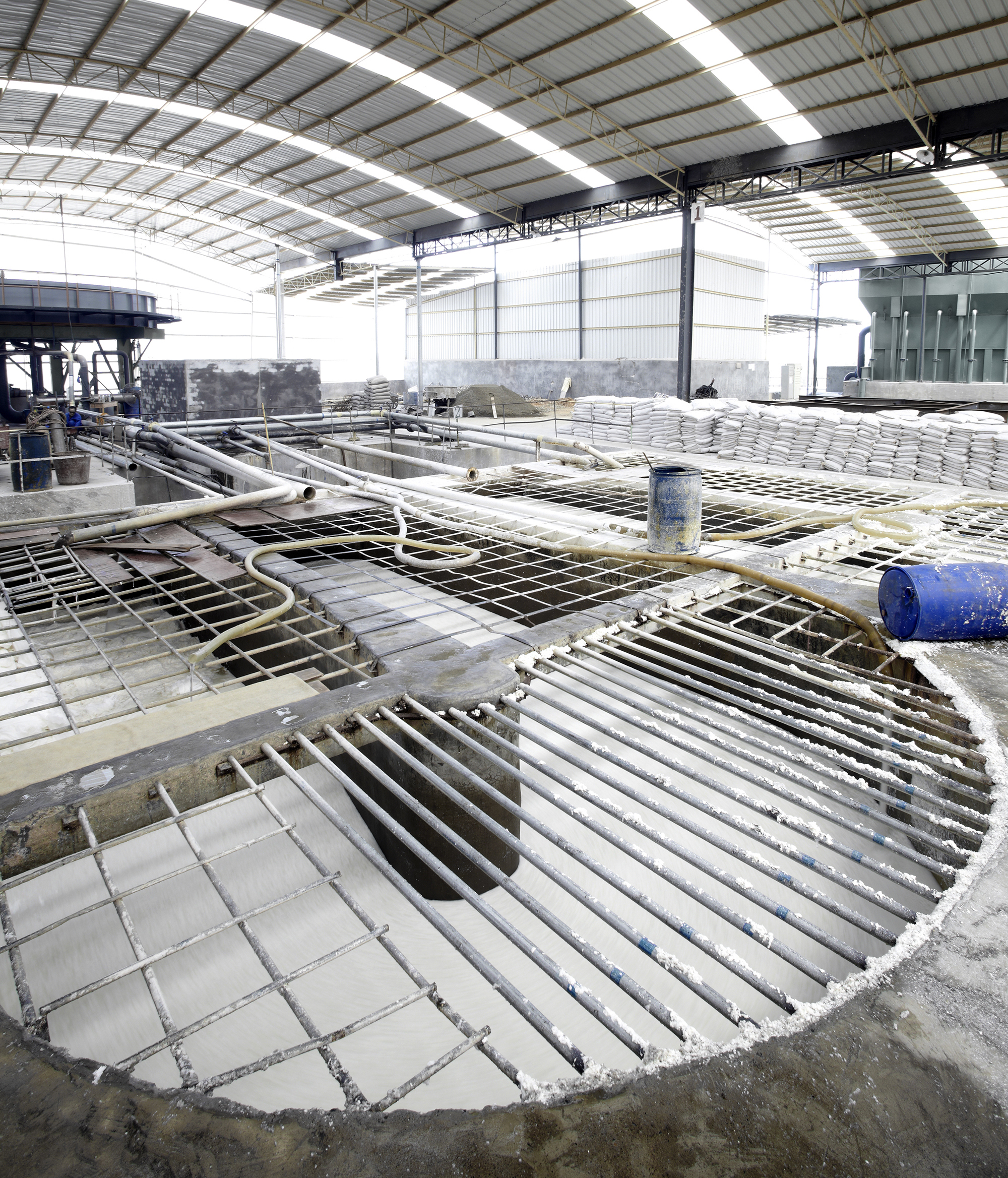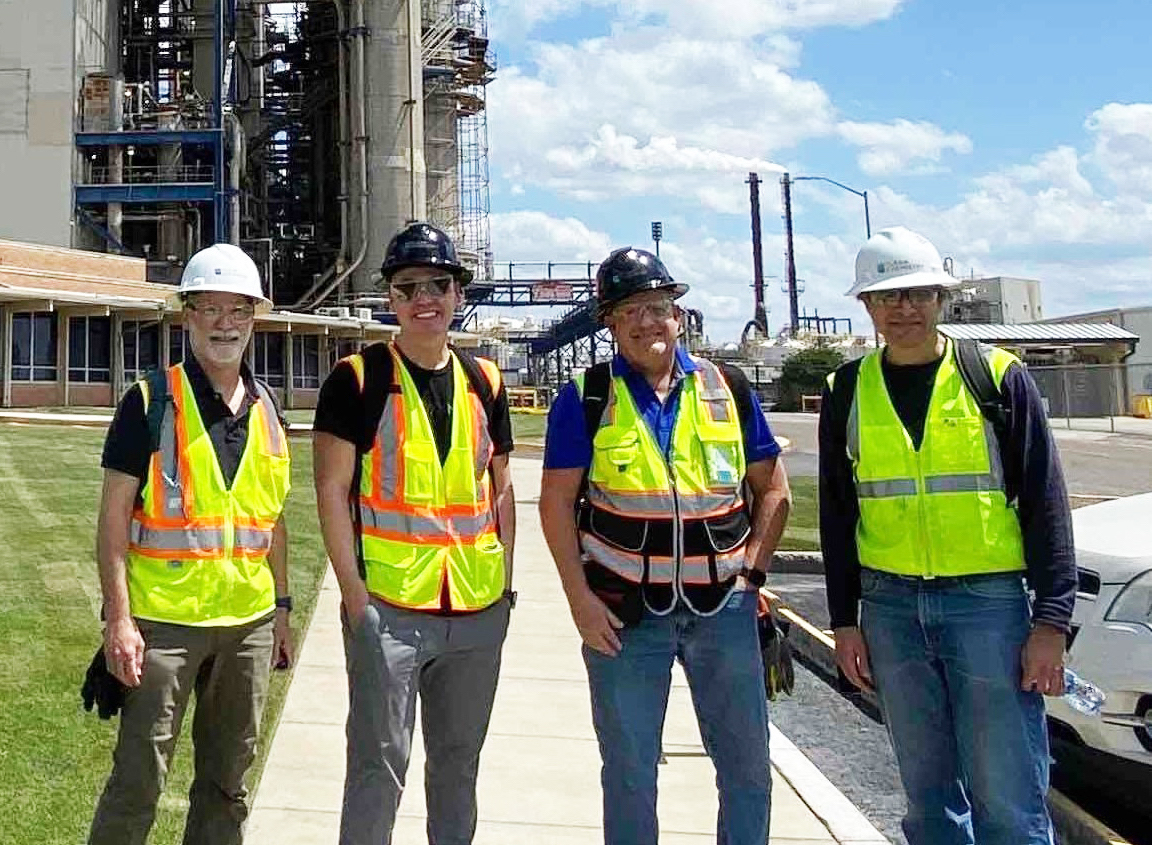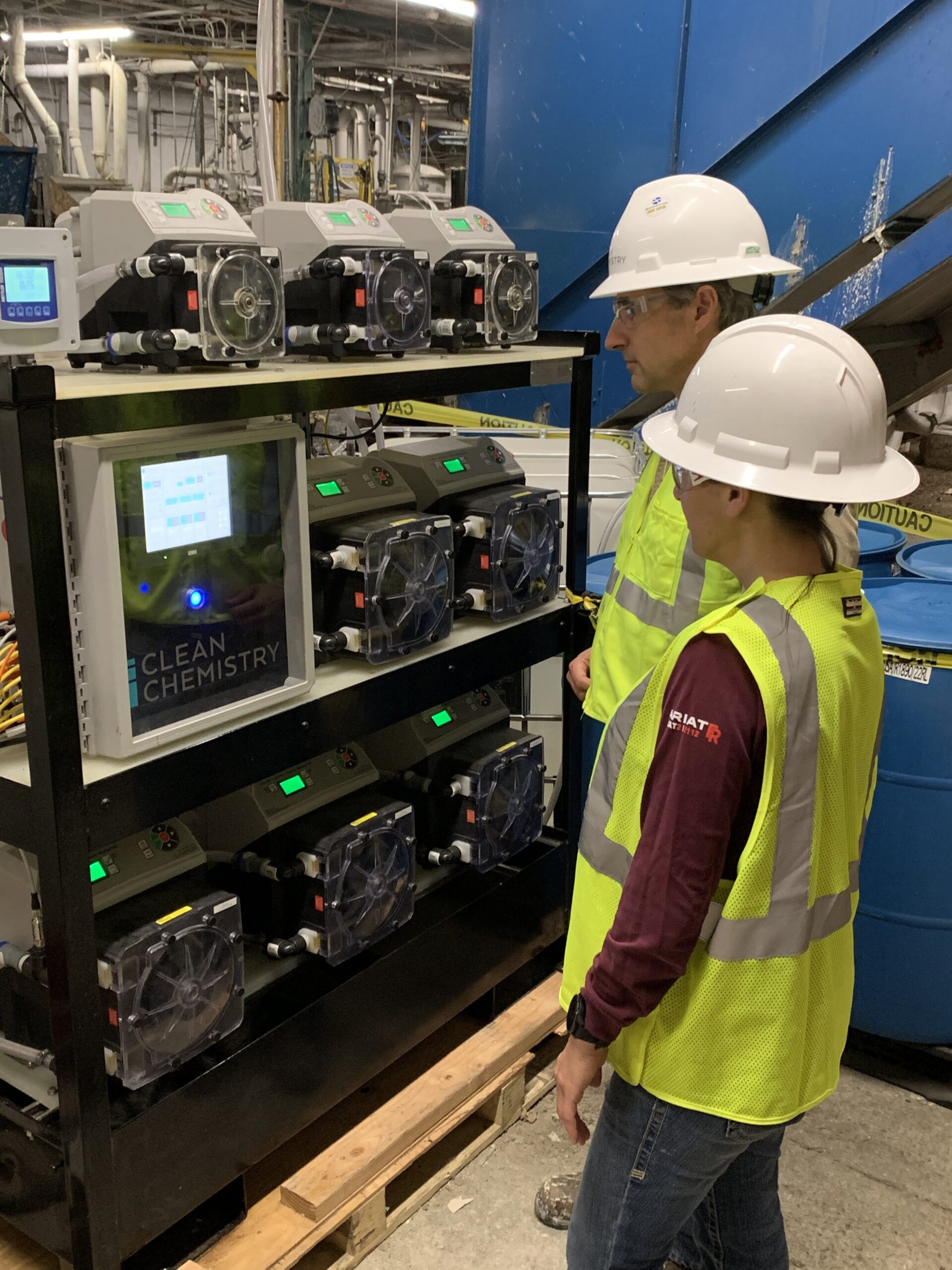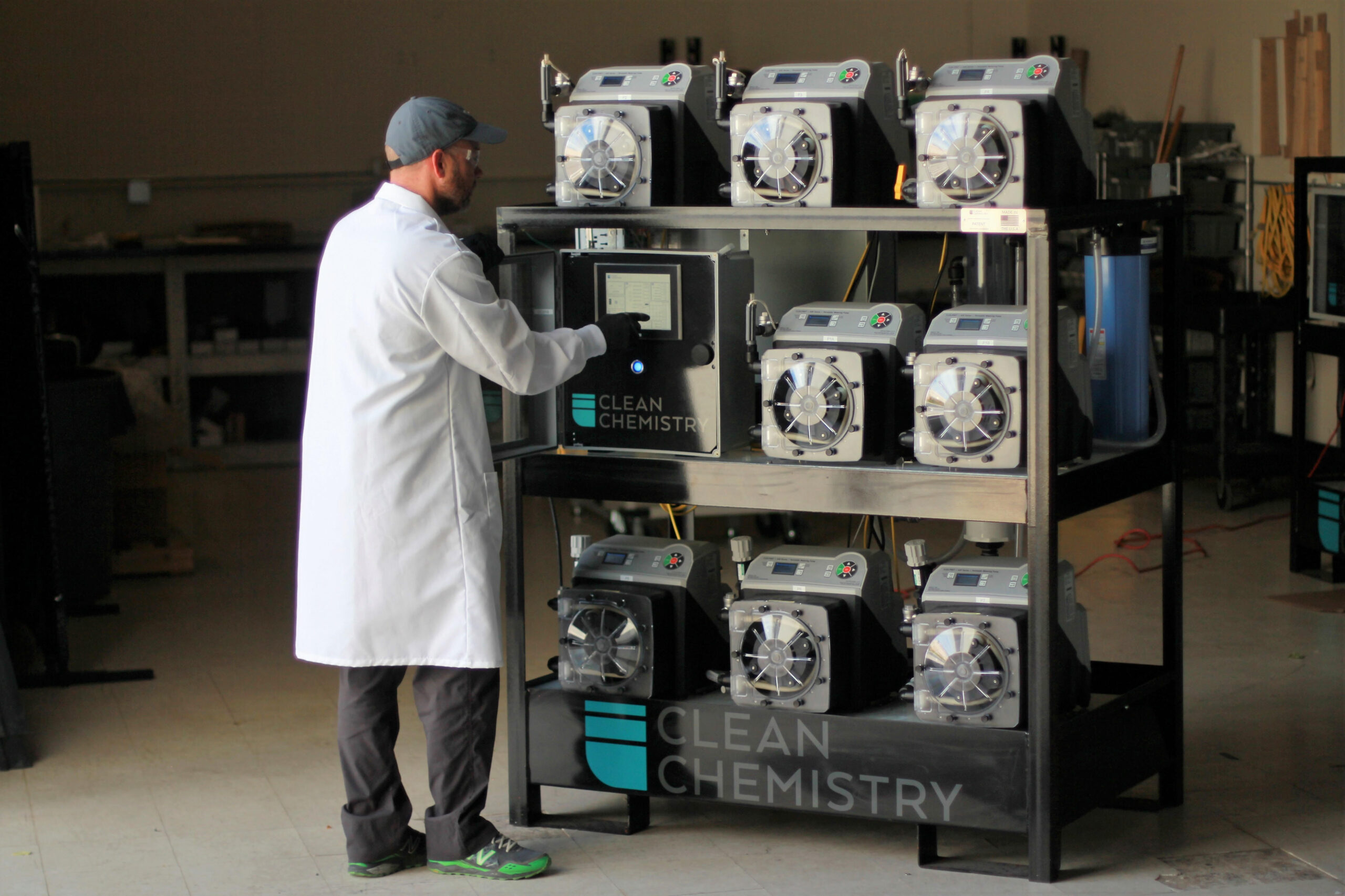Pulp and Paper
New technology helps pulp and paper mills meet sustainability and business goals.
PeroxyMAX™ Advantages Over the Traditional Mill Processes:
Cost Effective
Lower operating costs are achieved by decreasing the use of chlorine dioxide and hydrogen peroxide.
Less Corrosive
Less corrosive to equipment than traditional chemicals used in pulp and paper mills and reduces degradation on machine clothing.ᅠ
Improved Quality
Helps achieve brightness
levels unobtainable with
current chemicals
and processes.
Efficient
Compact mixing and dosing platform delivers added flexibility with low capital and operating costs.ᅠ
Safer Operations
Can be used in mill locations where chlorine dioxide or hydrogen peroxide cannot be used—such as open-top tanks—reducing the risk of gassing-off harmful fumes in later stages where there is more human interaction.
Improved Production
Helps alleviate bottlenecks associated
with limits on chlorine dioxide production
that can negatively affect
production rates.
Totally Chlorine Free (TCF) Operations
For more sustainable and environmentally friendly operations, Clean Chemistry can help remove chlorine chemistry from certain operations.
How PeroxyMAX Enhances Mill Operations
Bleaching
- Increase energy recovery from additional lignin removal in the final washer/decker prior to entering the bleach plant
- Reduce bleaching oxidant consumption, e.g., chlorine dioxide,ᅠin the bleach plant
- Reduced COD/BOD in bleaching effluent means less treatment needed before disposal
Brightening
Water Recycling
Pulp Bleaching
PeroxyMAX™ is a new oxidant with the versatility to perform safely in several locations throughout the pulp bleaching process. Its innovative chemistry and attributes compared to current oxidants allow operators to enhance mill performance at both the pre-treatment stage for delignification and the post-treatment stage for brightening.
A modern bleach plant uses oxidants to decrease or complement traditional chemicals such as chlorine dioxide and hydrogen peroxide. These products are used in virtually all global kraft pulp bleaching today. However, these chemicals come with drawbacks, including safety and cost. PeroxyMAX addresses these issues as well as providing many other advantages over conventional oxidants.
Pulp Brightening
Post-bleach brightening of pulp in the bleached fiber high density (HD) storage chest helps mill operators consistently meet or increase brightness targets, reduce color variation and increase color stability without significant capital investment.
- Increase and maintain elevated brightnessᅠ
- Reduce brightness reversion and decrease yellowing (b* value)
- Lower cost by reducing bleach useᅠ
- Reduce use of expensive Optical Brightening Agents (OBA)ᅠ
- Decrease oxidant carryover to the paper machine
Delignification and Bleaching Pre-Treatment
Delignification and bleaching before treatment reduces the amount of lignin reaching the bleach plant and can provide several cost-saving benefits. There are two potential PeroxyMAX application points depending on plant layout.ᅠ
Delignification pre-treatment wash and recovery: Loosens and removes lignin prior to the bleach plant. The recovered lignin can be used as biofuel in the recovery boiler while pre-treatment makes the pulp easier to bleach, reducing the need for other oxidants.
Delignification pre-treatment with no washing: Keeps the lignin in the system but makes it easier to bleach, reducing the need for other oxidants.
Maintain fiber quality: PeroxyMAX is highly reactive towards lignin but shows little activity toward cellulosic fiber making it a good choice for retaining fiber quality. Its selectivity and shorter reaction times help maintain fiber viscosity during delignification of brownstock and in the final brightening stages for bleached pulp.

Flexible Application Options
A great advantage to mill operators is the flexibility that PeroxyMAX can bring to the bleach plant. It is safely generated on-demand, near the point of application, and can be injected at points where other oxidants cannot be used due to safety, corrosion, or chemical compatibility limitations. This flexibility provides management with new options for optimizing plant yield, throughput and ultimately production goals at the mill.
-
- Safer liquid formulation
- Non fuming, low odor
- Produced on-site, no storage requirement, no transport of dangerous chemicals
- Fast-acting and non-persistent
- Less corrosive compared to other oxidants
- Compatible with existing mill materials, paper machines and recovery boilers
- Effective over a wide range of process conditions such as pH and temperature
- Reduces probability of harmful fumes, flammability or explosion concerns
Learn More:

Water Recycling and Disposal
Pulp and paper mills are one of the most water-intensive operations of any industry. Every step of the mill process relies on large amounts of water at each stage, both as a transport mechanism as well as a crucial part of the chemical reactions. It is critical to have clean water throughout the process. PeroxyMAX™ enhances water recycling and disposal operations by providing cutting-edge chemistry for water clarification, microbial control, odor control and contaminant removal. Improved water quality can lead to:
-
-
- More cost effective operations through enhanced water recycling
- Decreased fresh water usage
- Dryer, cleaner and low-odor waste sludge for disposal
- Reduced chemical use in recycling/deinking processes
- Helps plant remain regulatory compliance
-

Cleaner, dryer, less odiferous pulp sludge to dispose
Cleaner water helps enhance production
Sustainable Operations
PeroxyMAX treats the recovered water, so it is cleaner when reused for further plant operations
PeroxyMAX helps clean both the water and improve the removal of solids. The water is returned to the water supply with fewer contaminants for further use in the mill and the solids are more easily disposed of.
Less freshwater in, less wastewater out. As more water is recycled, there is less fresh water needed and less wastewater discharged for disposal. This results in lower third-party costs for transporting fresh water in and wastewater out of the mill and decreased wastewater disposal costs.
As mill operators look for better ways to improve paper quality, provide safer and more efficient waste disposal and achieve more sustainable operations, Clean Chemistry can help the mill achieve its ESG goals at every stage. Call Clean Chemistry today to see all the benefits PeroxyMAX can bring to your mill operations.

Get Started with Clean Chemistry
"*" indicates required fields

